contact center ai
contact center ai
A Guide to Call Centre Workforce Management
This guide will give you an end-to-end look at the components of a WFM solution, the growing WFM challenges that call centres face, and emerging WFM best practises that leading contact centres are using to drive smarter WFM and consistently outstanding customer experiences.
Having the right people in place, focused on key business goals and working productively is the foundation for success in any business unit. But when it comes to allocating and managing resources, the call centre presents two unique challenges:
1. Externally determined workload demands
In a typical business unit, you have significant control over the goals and objectives you’re working toward and the workload you’re placing on your staff as you pursue those goals. But in the contact centre, those goals and objectives are determined externally: Your customers call with needs—and you must be prepared to meet them.
2. 24/7 Workload Demands
Another privilege of internally determined goals and workloads is the ability to set expectations or limitations on when or how long staff will be working on achieving those goals. But once again, in the call centre, those expectations are dictated by your customers—and they may contact you via various channels at any hour of any day. That means you must have the right people ready to meet customer needs on a wide range of subjects and complexity levels—24/7.
Due to these unique challenges, most modern multi-channel contact centres rely on sophisticated workforce management (WFM) tools to help them optimise agent schedules and ensure consistent service levels.
Want to see workforce management in action?
A Guide to Call Centre Workforce Management
1
Externally determined workload demands
In a typical business unit, you have significant control over the goals and objectives you’re working toward and the workload you’re placing on your staff as you pursue those goals. But in the contact centre, those goals and objectives are determined externally: Your customers call with needs—and you must be prepared to meet them.
2
24/7 Workload Demands
Another privilege of internally determined goals and workloads is the ability to set expectations or limitations on when or how long staff will be working on achieving those goals. But once again, in the call centre, those expectations are dictated by your customers—and they may contact you via various channels at any hour of any day. That means you must have the right people ready to meet customer needs on a wide range of subjects and complexity levels—24/7.
Due to these unique challenges, most modern multi-channel contact centres rely on sophisticated workforce management (WFM) tools to help them optimise agent schedules and ensure consistent service levels.
This guide will give you an end-to-end look at the components of a WFM solution, the growing WFM challenges that call centres face, and emerging WFM best practises that leading contact centres are using to drive smarter WFM and consistently outstanding customer experiences.
What is Workforce Management?
At its most basic, workforce management is the process contact centres use to ensure that they have the right people and skill sets available to successfully handle customer interactions in a timely manner and at a minimal cost to the organisation.
Contact centres frequently use a metric called “service-level” as the basis for their workforce management. This is a goal set by the organisation establishing how quickly they want to respond to customer needs and resolve them. Call centres base their service levels on desired cost efficiencies and expectations for the customer experience.
In short, workforce management is all about figuring out how to meet customer demand, without over- or under-burdening agents.
The basic building blocks of contact centre WFM
include forecasting, scheduling and managing.
Calculate your savings with intelligent workforce management automation
Discover your company’s money & time savings with Calabrio’s instant calculator
Why is Workforce Management Important in the Contact Centre?
According to research from Dimension Data, 41.3% of contact centres still operate without WFM technology. That’s because, until recently, manual schedule management using spreadsheets was still considered acceptable for creating static schedules.
Yet, as contact centres continue to grow in size and complexity, this approach is quickly becoming outdated. Agents are now expected to be able to handle more than one type of transaction and those transactions can occur across multiple channels. Spreadsheet schedules just can’t scale to meet these evolving needs. That’s where streamlined WFM can help drive new efficiency into the call centre—with indirect benefits that extend across the entire enterprise.
Key values that can be served by next-gen WFM include

Consistent Customer Experiences
When customers contact an organisation, they want the same level of service regardless of who answers the call. Their expectation for each interaction is that the information they receive is accurate and helpful. They also expect to be helped quickly, without long hold or wait times. Call centres can directly influence these expectations with accurate staffing levels.
Agents Job Satisfaction/Engagement
Employees are happy when they feel supported and capable on the job. As self-service customer support features become the standard, Agents are increasingly relied upon to handle more complex contacts. This requires additional training to execute successfully. Yet under-staffed call centres often choose to cancel these sessions in order to keep up with demand. Agents pushed to the brink get frustrated and frustrated agents are more likely to quit. The true cost to hire and train an agent can be upwards of 1.5 times their annual wage and take up to 12 months to fully onboard.
When agent attrition is high, it can be a clear sign that agents aren’t happy. Scheduling employees to maximise work/life balance and prioritise feedback and support in the call centre can improve agent happiness—which means lower recruiting costs and increased agent engagement.


Operational Efficiency
One of senior management’s top goals is to deliver top-notch customer experiences, while efficiently allocating company resources. Both are directly impacted by the frontline staff. Adequate training and agent scheduling can help agents meet the demands of contacts.
Budget Savings
Resource-related costs account for approximately three quarters of a contact centre’s full operating budget. How you plan, schedule and manage those resources can make or break your budget. WFM prevents labour resources from being wasted due to overstaffing, while also maintaining adequate levels to deliver quality interactions.


How WFM Drives Agent Engagement
The surge in intelligent automation, new analytics engines, artificial intelligence (AI), and machine learning (ML) WFM tools promises to deliver dramatic new efficiencies to the contact centre. But organisations can only achieve these lofty goals—spanning customer engagement, budget and operational efficiency—when they have a deep understanding of their existing operation.
It is important to remember these tools were designed to complement and enhance—not replace—human agents. Your agents will remain the engine of your call centre operation. Therefore, assessing current agent engagement is a crucial first step to more efficient WFM.
It All Starts with Agent Engagement
Agent engagement is the level of personal investment a person has in his or her work. On average 30% of employees can be classified as engaged. A growing body of research shows that increasing agent engagement and ultimately job satisfaction directly improves the customer experience—and reduces turnover for both agents and customers.
Key Question: What’s the Secret Ingredient to Agent Engagement?
There is no secret ingredient to agent engagement. Engagement stems from a culture of respect, assumption of good intent, and working together to do the right thing. WFM analysts cannot control the culture, but their actions impact how an agent perceives leadership in a contact centre.
How WFM Drives Agent Engagement
Agents crave feedback
WFM can give agents robust, immediate performance feedback keeps them invested in their role and motivated to improve.
Understand what an agent wants to see from leadership
Often, flexibility—not money—is the biggest factor in agent satisfaction. Giving agents control over their schedules and their responsibilities through more efficient WFM goes further than a raise or a bonus.
Training to help them improve.
Modern WFM software offers functionality to support this, in addition to helping create time to receive feedback.
WFM can help you measure what matters
Metrics like average handle time do very little to provide insight to the customer experience. Instead, moving from a hard value to a holistic assessment gives the agents the ability to control the conversation without watching a clock.
When agents are engaged, it can create trickle-down benefits that affect the entire call centre operation. Call centres that prioritise agent happiness tend to have faster call resolutions and higher customer satisfaction—which helps grow brand loyalty and can become a key differentiator from competitors.
Benefits of Workforce Management Software
Dedicated workforce management software offers a significant upgrade over outdated, inefficient spreadsheet processes. As contact centres respond to rising pressures and new demands, they are looking for new ways to get more out of their agents, while also achieving better results. Across the call centre, WFM can improve schedule optimisation, increase agent engagement, streamline agent workflows and streamline reporting to better align the call centre around both of these objectives.
Here is a closer look at some of the unique benefits WFM software’s AI, ML and intelligent automation features can deliver to your call centre.

Increased Accuracy in Scheduling and Forecasting
Manually re-keying and manipulating spreadsheet data is time-consuming and error-prone. Even when using the utmost care to ensure data integrity, confirming the accuracy of spreadsheet-created schedules is difficult.
Also, using spreadsheets forces analysts and supervisors to guess the optimal timeframes for off-phone activities, such as meetings and trainings. As a result, the average spreadsheet-reliant workforce analyst creates forecasts and runs schedules only 1-4 times per year—leaving the contact centre vulnerable to over- or understaffing the rest of the time.
Workforce management software overcomes
these common accuracy challenges by
Enabling forecasts and schedules to be run more frequently and easily—in much less time—so the contact centre can respond more quickly to seasonality and staffing fluctuations.
Offering the option to reschedule easily, without having to start from scratch as would need to be done with a spreadsheet.
Helping contact centre leaders to better assess forecast accuracy via visual reporting and rectify situations where the centre is over- or understaffed.
Empowering intraday managers to immediately improve the service level by making on-the-fly adjustments, such as optimising breaks and lunches.
Making it possible for supervisors and analysts to identify at a glance the best times to schedule off-phone activities to minimise the potential negative impact on customer service levels.
Providing built-in communication services such as app notifications or SMS alerts to agents if schedules change. Excel planning doesn’t include these integrated systems that create instant alerts.


Less Time Spent Managing the Contact Centre
For contact centres embracing an omni-channel approach to customer engagement, manually forecasting contact volumes and creating schedules for numerous channels is especially time-intensive. When using spreadsheets, fulfiling agent scheduling preferences adds yet another layer of complexity to an already tedious process. As a result, many of those preferences often get ignored. Additionally, managing time-off requests through spreadsheets and emails can be incredibly time-consuming.
Workforce management software streamlines and automates these types of tasks, helping contact centres reduce the amount of time it takes to forecast, schedule and manage service levels for multiple channels and multiple locations. In fact, contact centres that use WFM to automate such tasks save—on average—25% of the time they currently devote to manually performing them. Time savings are even greater for larger, more complex contact centres.
With WFM automation, analysts are able to automate the majority of the day-to-day requests leaving them free to focus attention on ad hoc requests. Automation is set based on your business rules and can approve or deny agent requests for time off, meetings, trainings, mentoring or even schedule swaps with another agent. In addition, with automation, agents are all evaluated by the same set of rules—eliminating any perceptions that analysts are “playing favorites.”
With WFM automation, contact centres can:
- Develop hundreds of forecasts and schedules for different scenarios, in the same amount of time it takes to create a single forecast and schedule in a spreadsheet.
- Perform “what-if” analysis and review alternative options to significantly reduce over- and understaffing issues.
- Reduce the burden of reviewing and approving time-off requests by integrating and automatically syncing data with your company’s HR system.
- Enhance overall employee experiences and reduce attrition with improved employee self-service and faster request processes.
Greater Insight into Contact Centre KPIs
To adequately handle the forecasted workload, agents must actually follow their assigned schedules—otherwise known as “adherence.” Having even one agent out of adherence can greatly impact the service level, especially in smaller contact centres. Modern workforce management tools will allow you to view the agent schedules side by side with the actual phone states, so you can have more insight into what is happening in your call centre.
Modern WFM software solutions help contact centre managers monitor schedule adherence to minimise negative impact on service levels—universally affording them greater visibility to staffing with the ability to scale up or down to meet demand.
When it comes to meeting KPIs, WFM:
- Presents a one-stop shop view of adherence data, rather than requiring managers to manually compare spreadsheets to the automatic call distribution’s (ACD) real-time reporting screens.
- Alerts supervisors to non-adherence via easy visual indicators on dashboards, so they quickly can address issues.
- Empowers agents to self-manage by letting them view and monitor their own adherence status.

Easier Reporting and Analysis
Organisations must be able to accurately and expediently measure and report on call centre performance. Call centre that do not have a WFM system find this job to be time consuming as they need to pull data from many different systems and compile it in a single format for analysis and consumption.
By using WFM software tools, organisations can experience vast improvements in day-to-day contact centre operations driven by accurate reports that can be generated as needed with a click of a mouse. Reports can also be set up to autorun at preferred intervals—whether that be hourly, daily, week or even monthly.
With WFM automation, contact centres can:
- Create dashboards without help from IT, and without needing a degree in statistics or math.
- Gain real-time, visual reporting capabilities that reveal trends in volumes, staffing levels and adherence—and easy access to data that extends to the agent as well.
- Empower agents with self-service capabilities to alter work schedules or take additional time off the phone for training or meetings.
The Next Generation of Workforce Management
Evolving WFM challenges demand new solutions
For contact centre leaders, the pressures to maintain service levels and drive efficiency—while dealing with high turnover—remain constant. But as organisations in every category grow hyper-focused on the customer experience, the contact centre increasingly finds itself in the spotlight, amplifying these pressures.
To rise to the challenge, contact centre leaders are looking for smart workforce management (WFM) tools that enable them to get more: More out of their agents and more tools to add more strategic value to the business.
But in a crowded WFM market filled with seemingly similar products, what does next-generation WFM really look like?
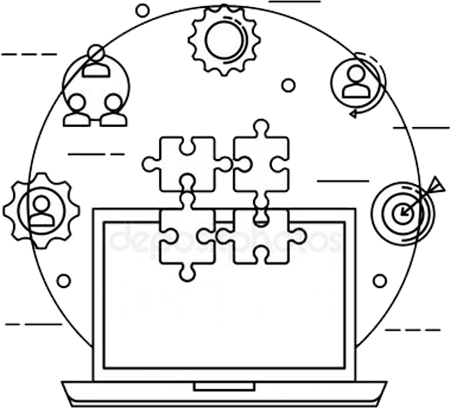
Identifying the Right WFM Solution
Every WFM solution on the market today offers basic scheduling functionality to keep your contact centre running at the status quo. But WFM partners who have leading-edge capabilities and functionalities can deliver added value to your call centre operation—driving new efficiencies into forecasting and scheduling.
This section will help you navigate this difficult decision by focusing on components that define next-gen WFM solutions:
Core Capabilities of Next-Gen WFM
Easy, Fast Deployment
One of the first questions to ask a WFM solution provider is, “How long will it take to get up and running?” Deploying a WFM solution should be a matter of weeks—not months. It’s also important to ask about implementation services, because you shouldn’t end up with huge bills for additional consulting just to instal the product. Look for expert guidance and implementation services that are fully included in the contract.


Self-Service Customizability
No two contact centres look exactly alike, so there’s no such thing as a one-size-fits-all WFM solution. That means customization is typically unavoidable. Almost every WFM solution on the market can be customised, but the complex nature of the software makes it difficult to personalise to each contact centre’s business requirements. Ideal solutions will include self-service customizability as part of the design framework. This makes it easy for any user—regardless of technical background—to make important customizations without costly expert assistance.
True Flexibility
Cloud-based solutions are no longer novel—they’re the standard. As such, your WFM solution should give you full flexibility in choosing a deployment model: cloud, on-premises or a hybrid deployment. And that flexibility shouldn’t require tradeoffs. If you choose a cloud deployment, you should expect full functionality. If you choose to deploy on-premises, you should expect the same level of scalability that the cloud can offer.
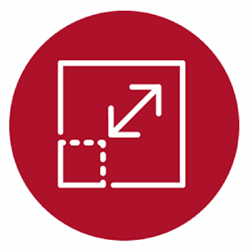
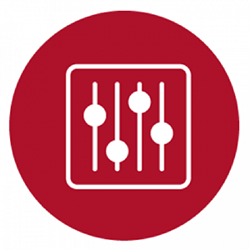
Rapid Learning Curve
Across all contact centres, a WFM analyst remains a high-turnover role, with high training costs amplifying the hurt of turnover. Leading WFM solutions are easing that pain by making training significantly faster. This allows a new WFM analyst to complete basic training in hours—not days—and begin contributing after just a half-day of training.
True Scalability
Most solutions touting scalability focus on scaling up. But best-in-class WFM solutions let you scale up and down in near real time. True scalability ensures you’re ready for rapid growth—and able to handle seasonal swings. Look for this two-way scalability and simplified licencing that ensures you only pay for what you need.

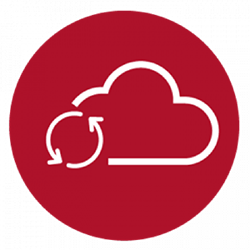
Easy Updates & Upgrades
Cloud-based WFM solutions make updates and upgrades seamless and automatic. New features and security patches are added as soon as they’re available, keeping your system state-of-the-art at all times. And because a tool is only valuable if you know how to use it, consider WFM solution providers who also provide guidance and training on new features. These value-added services should be built into the contract—not added cost.
Emerging WFM Best Practises
The WFM world continues to see rapid progress in what technology allows contact centres to do—from transforming daily workflows to enhancing long term strategy. So, what are innovative and forward-thinking contact centres actually doing with their WFM tools? Here are five ways to leverage best-in class WFM capabilities to unlock new best practises that drive contact centre performance.
Honing Ideal Schedules with Rapid Custom Scheduling
Leading contact centres are using rapid scheduling capabilities to create ideal schedules and accommodate changes. New rapid scheduling capabilities enable you to generate custom schedule requests with multiple custom parameters—in a few seconds, with a few clicks. This gives WFM analysts hours of time back and frees them to tweak parameters to further optimise schedules and drive WFM efficiencies.
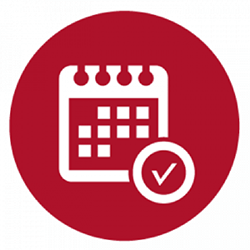

Using Predictive Forecasting to Build More Accurate Long-Term Plans
It takes time for WFM analysts to learn the unique patterns in contact volume—the daily and seasonal ebbs and flows. Moreover, these patterns are shifting faster than ever, with emergent issues driving one-off trends that break the mold. WFM solutions now leverage advanced ML and AI tools to predict those shifting patterns and emerging trends. By pulling together data streams from across the contact centre—and even across the entire organisation—these intelligent tools identify new and surprising connections to better anticipate changes. With these tools at their side, WFM analysts are confidently aligning staffing levels with predicted volume—from building more accurate seasonal forecasts to predicting intra-month surges.
Using Intraday Dynamic Scheduling Tools to Adapt to the Unexpected in Real Time
Today’s AI tools are smarter and more reliable than ever. But they can’t predict everything—weather-related issues, product quality problems, service outages, etc. When the unpredictable impacts service levels, new intraday dynamic scheduling tools can adjust agent schedules in real time. These dynamic scheduling tools instantly optimise agent lunches and breaks to better align with shifts in predicted call volume. They also enable WFM analysts to easily open up overtime opportunities to meet surging volume—and to offer voluntary time-off (VTO) during unexpected slow periods, because overstaffing can be almost as costly as understaffing.
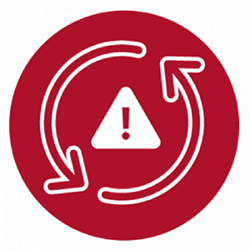
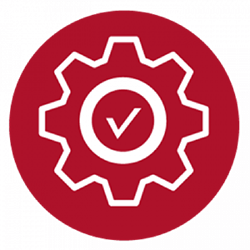
Streamlining Approvals with Simple Automation
Approvals tend to take up a disproportionate amount of time for contact centre managers and WFM analysts. Not only is this work tedious, it can create bottlenecks as you build long-term schedules or adjust schedules to accommodate unexpected volume. Best-in-class WFM solutions now make it easier than ever to build user-generated auto-approval workflows. While the traditional auto-approval workflow requires a complex chain of individual criteria, new WFM tools enable you to link multiple criteria in a single, intuitive, end-to-end workflow. This greatly reduces the daily burden of simple approvals, giving WFM analysts a more accurate real-time view of scheduling—and giving contact centre leaders more time to focus on more complex activities.
Enabling Agent-Empowered Scheduling
As the contact centre world works to crack the agent engagement code, one factor has been proven to deliver big impact at a very small cost: giving agents greater flexibility and control. Innovative contact centres are using new WFM tools that give agents the ability to select their own availability and control their own schedules. Best-in-class WFM tools are smart enough to automatically account for agent availability and future time off when creating full schedules. Dynamic scheduling tools add further agent empowerment, allowing agents to grab extra overtime hours to earn extra money—or enjoy some VTO. And leading WFM solutions bring all this to life in a mobile-friendly, self-service platform. Agents can manage their schedules anytime, anywhere and from any device, inspiring a more active, engaged role in their careers.

Finding a Partner vs. a Vendor
Look at any software solution provider’s marketing language and you’re sure to see the word “partner” more than a few times. So, what’s the difference between a vendor and a partner? In the simplest sense, a vendor sells you something that helps you achieve an outcome; a partner works with you to help you achieve that outcome.
The difference isn’t just service—it’s the approach to service. Many vendors offer the same “help” in achieving your goals. They just charge a premium for it—generating big revenue. In contrast, a true partnership approach aligns the success of the vendor with the success of the customer. As a result, a true partner is focused on doing everything they can to ensure your organisation’s success. A partner considers expert guidance, consultation and professional services as part of the solution they’re offering—added value without added fees.
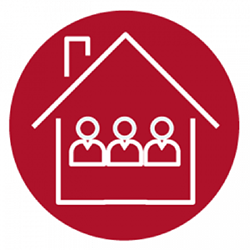
In-House Expertise
Consultative expertise drives the true partnership approach. But vendors face familiar pressures to drive cost-efficiencies—and many pursue a familiar strategy: outsourcing their customer service and professional services. This strategy should leave you with questions about the depth of product knowledge from these third-party “experts.” Moreover, by keeping all expertise and service in house, a true partner maintains a direct connection between your team and the in-house experts—helping to drive efficient communication and effective solutions.

VOC-Driven Product Development
Contact centre leaders know the value of the voice of the customer (VOC). In fact, most successful organisations today are adopting a customer-centric approach that lets the VOC guide business decision-making. You should expect the same from your WFM solutions partner. Look for a partner that actively seeks customer feedback—from all customers, not just the big-name or big-ticket ones—to constantly improve their WFM tools. Look for a demonstrated record of VOC-led product development. This customer-fueled innovation gives you confidence in your WFM investment, knowing that your biggest pain points will rapidly be turned into new features and functionalities.
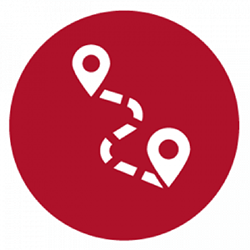
Clear & Confident Product Roadmap
Making an investment in a WFM solution is a major undertaking—and you should feel confident in the long-term viability of the toolset. The first thing to look for is a simple product portfolio: no confusing matrix of features and functionalities; no redundant offerings (the hallmark of a portfolio built through disjointed mergers and acquisitions). Second, look for a demonstrated commitment to investing in product development. There should be no risk of your WFM solution stalling or getting phased out. Digging into a vendor’s product roadmap can give you the confidence you need to make a future-proof and protected investment.


Capitalising on the Promise of Next-Gen WFM
As contact centres face evolving challenges and increasing demands, rapid innovation in WFM technology promises to rise to the occasion and help achieve an elevated approach to WFM. But with a crowded marketplace, perhaps the greatest challenge is making smart investments in WFM tools and technologies that can truly deliver on this promise. The good news is that the right tools and solutions are out there—and they really can revolutionise the way your contact centre operates. Once you have identified the capabilities your operation needs to achieve next-gen WFM, you can ensure your WFM solution has the core functionality to let you hit the ground running and achieve the outcomes that matter most for your business.
A Complete Guide to Workforce Optimisation (WFO)
While the term Workforce Optimisation is not new, it is only within the last few years that contact centres have begun to truly embrace the strategies inherent to WFO and begun to approach it as a holistic set of technologies and best practises. Expectations from a customer service perspective have never been higher—and will continue rising as new technologies arise and world-class contact centres raise the bar of what a truly great customer experience can be.
In this post we will introduce the concepts of WFO and outline some best practises around each aspect of a WFO solution. In addition, we will outline some criteria for choosing a WFO platform, including the features and functionality that best-in-class organisations are looking for when they are implementing a new solution.
In this guide you’ll Learn about:
What is Workforce Optimisation & Why does it matter?
How Workforce Optimisation fits within the contact centre?
The history of Workforce Optimisation
WFO terms to know
Who is WFO for?
The components of Workforce Optimisation
Workforce Optimisation Deployment options
The future of Workforce Optimisation
Want to see these technologies in action?

What is Workforce Optimisation (and Why Does it Matter)?
According to Wikipedia: “Workforce Optimisation (WFO) is a business strategy that integrates contact centre technologies for customer experience to promote operational efficiency. The strategy involves automating processes, data visibility, compliance on legislation and solving business problems related to staff. It [WFO] is used by call centres to improve workforce management and agent performance”. In other words, WFO is a blanket term that covers every functional aspect of running a modern contact centre, including workforce management, quality management, business intelligence and analytics, as well as concepts like agent engagement and customer retention programmes. In today’s ultra-competitive landscape, investing in a true WFO strategy is critical to staying relevant in the market place. Customer expectations have never been higher, and consumers are more-than-willing to shop around for the best experience possible—even if that experience comes at a higher cost.
However, it is important to also understand that each organisation views WFO through a different lens based on specific priorities. These priorities typically vary by vertical, but they are also driven by the executive leadership and the company’s specific market strategy. This means that there are as many flavors of WFO in the customer service world as there are types of contact centres.
How Workforce Optimisation Fits Within the Contact Centre
While WFO is often viewed as just one component of a contact centre, it’s more accurate to view WFO as the glue that holds a successful contact centre together. Successful organisations have a clear WFO strategy that begins with their customers’ initial interactions with an Interactive Voice Response (IVR) system. The prompts and menus contained within this system should be designed with the end user in mind: Enable them to get the information they need as quickly and as intuitively as possible. If that information can be given automatically via the IVR without involving an agent, it saves organisation money—and, more importantly, it saves time for the customer.


If it does become necessary to send a contact to a live agent, organisations with a focus on WFO will fully leverage the power of their Automatic Call Distribution (ACD) system to ensure that the customer is sent to the person who can handle the request as quickly and efficiently as possible. Today’s ACD platforms are incredibly powerful, making real-time decisions to ensure that contacts are routed in the most efficient manner at any given time of day, maximising the resources that are available.
While these technologies are incredibly important and valuable in their ability to improve the customer experience, it is after the contact has routed through the automated systems that the functions most traditionally associated with Workforce Optimisation (namely Workforce and Quality Management) come into force. The contact centre must ensure not only that it has the human resources available to take on more complicated contacts, but that agents have the proper tools at their disposal to ensure they can handle the customers’ issues quickly and efficiently.
The History of Workforce Optimisation
In the early days of the industry, contact centres were seen as cost centres and treated as a necessary evil in many ways. While this antiquated view of the contact centre may still hold sway in a few isolated pockets, today the clear majority of organisations see the true value that the contact centre is able to provide to the organisation—and are investing accordingly in order to see even greater returns. In today’s virtual marketplace, the contact centre is often the single point of contact that a client may have with any given brand. Forward-thinking organisations must put their best foot forward and give customers a positive contact centre experience that stands out from the competition.
Fortunately, modern contact centres have access to technologies that early contact centre managers could only dream of. Long gone are the of manual call evaluations and endless spreadsheets and “spreadmarts” to track contact centre metrics. Today’s contact centre leaders have a wide variety of innovative solutions at their fingertips, applying leading-edge technologies like machine learning and artificial intelligence to traditional contact centre problems. In recent years, contact centre technologies have made tremendous leaps in their ability to integrate tools like Speech, Text, and Desktop Analytics solutions within true Business Intelligence suites, empowering management teams to find solutions to their most challenging issues—and in many cases, to find solutions to problems they never knew existed.
However, this growth in capabilities corresponds with an all-too-common growing complexity in contact centre technology solutions. One of the primary culptrits for complexity is the increasing consolidation in the contact centre technology market. This consolidation has led to poorly integrated, difficult to use “suites” that are more like a roughly assembled patchwork—riddled with holes and redundant functionalities. Yet many of today’s best-in-class WFO vendors have responded by doubling down on things like ease-of-use and data transparency in order to enable their end-users to get the most out of their WFO investments.
WFO Terms to Know
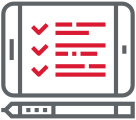
Compliance Call Recording
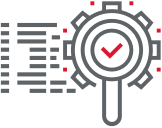
Workforce Management
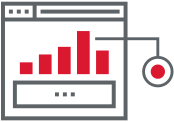
Analytics

Voice of the Customer

Quality Management

Gamification

Contact Centre Reporting
Who is WFO For?
Contact centres of all sizes can benefit from the productivity and efficiency gains that come with a comprehensive WFO suite. Through the strategic use of WFO and analytics tools, small contact centres can now compete with customer service organisations of any size. Analytics tools, in particular, level the playing field by helping organisations use customer data to drive decisions around employee engagement, operational efficiency, brand alignment, customer engagement, risk and compliance, and sales acceleration—across the organisation. Not all analytics tools are created equal. Contact centres should look for easy-to-use analytics solutions that present users with customizable dashboards and data visualisations, which eliminate the need to invest in hiring data scientists and professionals with advanced degrees. These ease-of-use qualities are important for any size contact centre, but they grow in importance as organisations (and their budgets and resource pools) grow smaller.

The Components of Workforce Optimisation
Workforce Optimisation is really a strategy that helps organisations ensure that they are maximising the skills of their workforce to enable a better experience for their end customers. Every organisation goes about this mission in a slightly different way, but there are some key building blocks that all contact centres use to build the foundation of their WFO platform. These building blocks include:
Quality Management
A well-defined Quality Management programme is the most important part of any organisation’s customer satisfaction strategy. Customers need to be treated with respect and have their toughest questions and issues solved in a timely fashion. Ensuring that all agents in the contact centre can meet those requirements is the job of the Quality Assurance (QA) team. By reviewing real-world contacts and providing feedback, coaching and training to agents, the QA team can directly impact the level of service their contact centre is providing.

QM Functionality
When investing in a Compliance Recording and Quality Management platform, organisations need a set of tools that will enable them to accomplish their goals. As obvious as it sounds, achieving this can be surprisingly complicated. In most cases, organisations are trying to balance the needs of the contact centre with those of the IT/IS department. From an infrastructure and security perspective, the IT/IS department is concerned primarily with platform reliability and security, as well as making sure the system is compliant with all regulations. For this reason, stable and secure cloud-based solutions are becoming the norm for many organisations of all sizes.
While the contact centre is concerned with security and compliance, they are also focused on quality assurance and agente performance goals. Since every contact centre has a unique set of priorities, a QM platform must have a flexible evaluation platform that allows for customization and innovative scoring systems. Reporting is also a critical aspect of any QM programme, so an intuitive, customizable reporting system is another requirement.
In the last decade, the contact centre industry has truly embraced the omni-channel world, giving their clients the freedom and flexibility to communicate in whatever form feels most convenient and efficient at any given time. To deliver on this flexibility, modern multi-channel contact centres must treat every channel with the same degree of importance as they have always treated the voice channel. When evaluating any Recording and QM platform, ensuring that the platform has the ability to fully collect and securely store any non-voice channel communications—and that these channels can be reviewed, evaluated and made available for coaching—is vitally important.

QM Best Practises
Regardless of your organisation’s specific contact centre QM goals, here are five established best practises for building and maintaining a successful QM programme:
- Update QA forms regularly: At a minimum, every contact centre should perform a QA form review on an annual basis. The purpose of this review is to ensure that the QA form still reflects the organisation’s priorities and goals as well as ensuring every question within the QA form is coachable and actionable.
- Set goals that maximise QA time: Evaluating at least two contacts per channel per agent is an ideal goal to work toward. It allows for enough data to effectively coach your agents and track performance over time. If you have the ability to evaluate a larger number, it provides your system with even more data, enhancing the accuracy and relevancy of your QM insights.
- Calibrate evaluations on a regular basis: QM metrics are only as accurate as the data feeding into them—and that data often depends on the human inputs from your QA team. Regularly calibrating evaluations across your entire QA team ensures all evaluators are assessing contacts through the same lens.
- Include agents in the QA process: Allowing agents to review and score their own contacts provides them with a greater understanding, as well as a sense of ownership in the QA process.
- Create a Best Practises Library: This library should include examples of the best interactions your agents have had in the past, as well as some of the worst, and creates an excellent training and coaching tool.
Calabrio Quality Management
The one-stop solution for performance and quality improvement.
Workforce Management
Workforce Management (WFM)
The goal of any Workforce Management (WFM) team is consistency. From a service level perspective, you want to provide a consistent experience to your customers—each and every time they reach out to the contact centre. Service level standards vary greatly by industry and channel, but the goal should always be to answer inbound contacts in a consistent time frame and to ensure you’re maximising the value of your contact centre staff by forecasting and scheduling the right number of people with the right skills at the right time.
Great scheduling depends on accurate forecasting. And as any meteorologist can attest, predicting the future is no exact science. However, when knowledgeable and experienced people have access to the right forecasting tools, your WFM programme will thrive.
WFM Functionality
In the early days of contact centres, prior to the advent of advanced contact routing solutions, the job of the WFM team was a bit simpler. Agents would only handle one type of call on any given day, so it was simply a matter of predicting the number of contacts you would receive based on historical data—and scheduling agents accordingly.
Today WFM is much more complex. Agents generally have multiple skills and in many cases are responsible for handing contacts from multiple channels—sometimes simultaneously. This makes the job of the WFM Scheduler much more complicated, requiring a deep level of understanding of the impact that this degree of multi-skilling has on the contact centre as a whole.
When looking at any WFM technology, there are a few key requirements that every organisation should be looking for:
Tools for generating accurate forecasts
In most cases, you will be forecasting based on historical data, so being able to manage this data is vitally important.
A true multi-skill scheduling functionality
In order to maximise available resources, you must accurately model the way our agents handle contacts. So, being able to precisely define available agents’ skills and channels is critical.
Real-time adherence monitoring and reporting
The quickest way to ROI with WFM is to simply hold agents accountable to their schedules. Any WFM platform must have a robust, real-time and historical adherence-tracking functionality.
Intraday toolset
No matter how accurate forecasts get, things can (and do) change in unpredictable ways. The job of a WFM analyst is always going to require last-minute adaptations and dynamic decision-making. This requires a set of tools that enable the WFM Intraday Analyst to adjust and make changes on the fly.
Intuitive agent interface
The often-overlooked users of a WFM solution are the agents themselves. Agents need to be able to access their schedules and make requests in a simple-to-use interface. This is the primary way they should communicate with the WFM team.
Robust historical reporting
The WFM team lives and breathes graphs and statistics. Put simply: A customizable, intuitive reporting toolset is a must.
WFM Best Practises
Set a realistic adherence goal for your agents
No one can adhere to their schedule 100% of the time and it is not realistic to hold agents accountable to this standard. The WFM team should set a realistic adherence goal for their agents based on factors like average handle time and the number of state changes an agent goes through on an average day. If your WFM team spends any time in their day adjusting breaks and lunches after the fact because an agent was stuck on a phone call, this is a good indication that your adherence goals are too high.
Minimise the time between schedule creation and production
Many organisations like to generate schedules months in advance. The downside to this strategy is that any changes in contact volume, handle time or available staff that happen in the meantime won’t be reflected in the schedule—or will require a whole new schedule to be generated. By generating final schedules a week or two in advance, you maximise your chances of having an accurate schedule—and minimise the need for re-working.
Allow flexible scheduling
Too often, the WFM team falls back to standardised schedules (8-5 Mon-Fri, 10-7 Sun-Fri, etc.). These schedules are easy to manage from a WFM perspective, but don’t necessarily fit the needs of contact centre agents’ lives and their requirements for work-life balance. Finding ways to increase schedule flexibility while still meeting the requirements of a forecast is a great way to increase agent engagement.
Use Overtime and Voluntary Time Off to your advantage
Incentivizing agents to leave early or come in during times of high need is one of the best ways to save your contact centre money in the long run.
Review WFM practises and goals annually
When was the last time you reviewed your service level goals to ensure they are still realistic and within your customers’ level of tolerance? An annual review of WFM processes and goals will ensure that you are always on the forefront of delivering world-class customer service.
Elevate Your Approach to Workforce Management
Smart Scheduling and Dynamic Employee Engagement
Customer Interaction Analytics
Customer Interaction Analytics
The contact centre and the infrastructure surrounding and supporting it has always contained a massive amount of data—and the challenge has always been bringing that data together in a usable way. Modern analytics tools solve this challenge more quickly and cost-effectively than ever, bringing customer interaction data to life and allowing the contact centre to tell the story of how an organisation is performing in its mission to serve its customers.
As part of this story, customer interaction data also contains key insights on employee performance. Those same advanced analytics tools enable the contact centre to catalog and measure employee performance data to unlock the true potential of our workforce. By benchmarking the behaviours of top-performing staff and using those benchmarks to coach and train the contact centre staff at large, leadership can provide clear direction to agents while empowering them to track their own progress with key metrics.
Analytics Functionality
Best-in-class organisations are looking for the latest technology in their analytics platform to enable them to stay ahead of the curve. With the typical day of today’s contact centre growing more complex, an analytics platform must be flexible and powerful enough to keep pace. Critical functionality include the following:
Speech Analytics
This is the technology that most people think of when they hear the term “contact centre analytics.” Speech analytics tools have been available for many years, but recent and significant improvements in this technology dramatically increase both the accuracy and the speed of analysing voice interactions. Since the vast majority (~64%) of contact centre interactions still take place through voice channels, phonetics and speech-to-text (also called Large Vocabulary Continuous Speech Recognition or LVCSR) analytics are essential to a contact centre analytics programme.1 Each has its relative strengths which complement the other. The use of phonetics is great for detecting slang, jargon, and regional accents. The use of speech-to-text is great for in-depth investigation, ad hoc searching, and helping you find things you weren’t even looking for. Best-in-class contact centre analytics solutions combine speech and speech-to-text analytics to give you everything you need to examine customer calls.
Text Analytics
As customers increasingly turn to text-based channels like email, chat and social media, an analytics solution must be able to apply the same level of scrutiny to these written communications as it would to the spoken word. Fortunately, text-based interactions are actually much easier for analytics engines to digest, because they don’t require any special phonetic recognition or transcription. In essence, text analytics tools blend the capabilities and strengths of phonetics and speech-to-text tools to your text-based customer interactions. And because the text is already transcribed, text analytics avoid many of the downsides or shortcomings of their speech counterparts: there’s no risk of transcription error and there’s no transcription time or processing requirements.
Desktop Analytics
A powerful new tool that is rapidly growing in use across the contact centre world, desktop analytics correlates the content of an interaction (what your customers and agents are saying) with agent desktop activity (what your agents are doing). This allows managers to see the ways that their staff are utilising the tools that are available to them, and to find and implement new and more effective tools and techniques—justifying these initiatives and investments based on real analytical data.
Predictive and Prescriptive Analytics
Predictive analytics tools use current and historical facts (data) to make predictions about the outcomes that most affect the contact centre and enterprise—and recommendations about what to do next. In short, these analytics tools shift their focus from answering the question, “What has happened?” to telling yo, “What now?” and “What next?” Advanced predictive modelling, machine learning (ML) and artificial intelligence (AI) all drive these intelligent predictions. Predictive analytics tools leverage call recordings, quality management scores, customer surveys, Net Promoter Score (NPS), as well as text and speech analytics to create mathematical models of both customer and agent behaviour. This enables predictive quality evaluation scoring and predictive NPS for 100% of customer interactions, allowing the organisation to take proactive measures to manage agent performance, improve customer engagement, and gain deeper insights into the customer journey.
Analytics Best Practises
Start Small
With a new analytics toolset, it is tempting to dive in head-first and investigate every question you have ever had. This can lead to what some refer to as “Analysis Paralysis.” In your early efforts, it is important to stay focused on one or two key issues, working through them systematically until you have a clear process in place.
Be prepared to act
While it’s thrilling to get objective answers to critical questions in your organisation, it’s not the answer that matters—it’s the action you take as a result. If you are not prepared to act on the findings from your analytics initiatives, you are simply wasting time.
Follow up
After implementing an action plan, it is critical that you track your progress against key metrics that you expect to change. Reporting this progress—both up the chain to organisational leadership, as well as down the chain to your agents—gives you valuable buy-in that will propel future analytics work.
Process is king
As with any WFO project, having a clearly defined process from start to finish is incredibly important for analytics. At a high level, this process should include developing a question and hypothesis, collecting data, creating an action plan, and conducting follow-up reporting.
Look beyond the contact centre
Analytics isn’t just a contact centre tool. Your customer interactions contain a wealth of information and insights that directly tie to key business objectives across your organisation. Involve your Marketing, Sales, and Operations departments in your analytics processes. Look for new ways to apply your contact centre analytics tools to questions, problems and business challenges that exist beyond the contact centre. This will help you truly maximise the value you receive from your analytics platform.
Workforce Optimisation Reporting
Workforce Optimisation Reporting
The business world has been buzzing about Big Data for decades now. The contact centre is the classic example of a Big Data problem: Recorded phone calls, emails, chats, social media posts, customer comments, CRM, ERP, HRMS, and many other sources of data are coming together in one place; how do you make sense of all of this data? As more organisations have begun working to answer this question, Reporting and Business Intelligence have become a major focus for the contact centre.
The great news is that, in recent years, new Business Intelligence tools have become dramatically more accessible, more cost-effective and more intuitive—allowing just about anyone in the organisation to slice and dice their data into a useful and meaningful format with just a few button clicks. These new tools empower next-generation contact centres and other organisations to be able to use their data to tell the stories and communicate the most critical information they have to the organisation and an easy-to-understand way using concise reporting and clear visualisations.
Reporting Functionality
Flexibility: Every organisation’s reporting requirements are as unique as those organisations themselves. This makes flexibility and customization the most critical qualities in any contact centre reporting platform.
Data integration: As the contact centre becomes the hub for an ever-expanding set of data streams, you need the ability integrate these data sources and create blended data reporting and visualisations that removes data from traditional silos.
Automation: Data collection should be automated so that the latest information is always available to the reporting engine without manual work. The reports and visualisations themselves should also allow for automation so that regular, recurring reports can be delivered to the stakeholders within an organisation with minimal effort.
Enterprise-wide capabilities: Best-in-class reporting and Business Intelligence platforms include true Data Mart functionality that extend their potential to use cases across the entire organisation—not just the contact centre. Seeking out these enterprise-capable solutions increases the value of the tools—and helps the contact centre secure funding for any BI projects, since the cost can be shared between multiple groups in the organisation.
Reporting Best Practises
Determine key stakeholders—but think beyond the contact centre: The first step in building a WFO reporting programme is to determine which departments, teams and work groups your reports will be serving. This list should extend beyond the contact centre—consider every element of your organisation that is impacted by customer experience, from sales and marketing, to supply chain, to top-level leadership.
Gather reporting requirements—but don’t limit yourself to common or existing metrics: Once you have your stakeholders, begin determining your reporting requirements by figuring out what questions you’re attempting to answer and which business problems you’re attempting to solve. While it may not be possible to develop a metric that meets every need on this list, it’s important to start with what you want to know—rather than what metrics you already know exist.
Avoid redundancy—and ensure consistent formulas: Traditionally, many contact centres have taken an ad hoc approach to reporting. An individual user comes with a specific reporting request or need, and a unique report is developed based on that need. But many of these one-off reporting requests end up using the same data and providing overlapping metrics. In practise, this is not only hugely inefficient—wasting time re-creating overlapping or entirely redundant reports—but it also expands the risk of competing metrics. When two similar reports are created separately, they may use different formulas or approaches to measuring the same thing. As you can imagine, this can lead to big internal problems, as different departments and different programmes are monitoring—and acting upon—different versions of reality.
Think big—and leverage enterprise-wide data integration: As you draft reporting requirements and develop reports to meet those needs, don’t let traditional data silos limit your thinking. If a marketing leader wants to combine ACD and QM system data with CRM and marketing automation system data, you should expect a best-in-class contact centre reporting platform to be able to tap into those disparate data streams and synthesize a report that gives that cross-enterprise visibility.

Workforce Optimisation Deployment Options
When implementing a new WFO platform, choosing the deployment method that works best for your organisation is almost as important as the platform itself. Organisations of all types are increasingly choosing cloud-based deployments of all their major enterprise systems. Cloud-based WFO offers a wide range of advantages (discussed below), but it’s not right for every organisation. Fortunately, best-in-class WFO platforms give you the freedom and flexibility to choose your deployment model—without sacrificing functionality, scalability or cost-effectiveness. It’s important to begin by reviewing the pluses and minuses of each deployment method to identify which model fits your contact centre’s unique needs and requirements:

On-Premise Deployment
Until recently, the on-premises deployment model was the only option available for companies looking to implement a WFO suite—and it’s still the model most organisations are familiar with. In an on-premise deployment, the organisations supplies its own hardware to support the software platform and all of the infrastructure surrounding it. While software maintenance contracts are common in the WFO industry, the customer is responsible for any hardware-related issues and the expenses associated with supporting that hardware. The primary benefit to an on-premise deployment is that the organisation retains complete freedom to secure the software environment in the way that they see fit—making the on-premises model very appealing for organisations that have extremely specific security requirements.

Cloud Deployment
In the early days of cloud deployments, there were understandable concerns regarding security, as well as frequent functionality limitations (in short, many cloud deployments were basically “lite” versions of the software). However, cloud technology has dramatically improved, and today’s leading cloud-based software offers security and functionality that is equal—and often better—than on-premises versions. Many forward-thinking organisations, including some of the most high-assurance, security-minded companies in the world, now embrace the inherent stability and security of cloud-based solutions. In addition to stability and security, a major benefit of cloud-based deployment is that all maintenance and hardware costs are covered by the vendor rather than the client. This allows the organisation to focus more on their core mission, and less on infrastructure requirements. Automated updates, including new and enhanced functionality and security patches, are another key benefit to moving to the cloud—and particularly beneficial in the WFO space, where the pace of change and technology improvement continues to accelerate. Finally, cloud-based deployments typically provide greater scalability—both up and down—allowing organisations to avoid major capital outlays, only pay for what they need, and be able to quickly ramp up to respond to seasonal spikes or other volume increases.
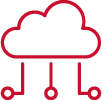
Hybrid Deployment
In a hybrid deployment, the organisation retains some portion of the software infrastructure on-premise, with other core technology in the cloud. This can be a good middle ground for organisations that have specific security requirements, allowing them to, for example, maintain full, on-premises control of data storage, while shifting the burden of supporting the rest of the WFO suite infrastructure into the cloud and onto the vendor.
The Future of Workforce Optimisation
As the view of the contact centre continues to change from that of a cost centre to a true resource that adds value to the entire organisation, we’ll continue to see tremendous advances in contact centre technologies and their applications. In particular, machine learning and artificial intelligence technologies will rapidly make valuable contact centre data even more accessible than it is today. Even the most advanced contact centres are frequently still in the early stages of understanding the customer journey and how it applies to their day-to-day initiatives. The most important part of those integrated WFO and customer experience intelligence programmes, however, are simply getting started. By following some of the best practises detailed in this guide, your organisation can begin building and implementing a forward-thinking WFO strategy that will quickly begin delivering measurable value—from improving workforce productivity and operational efficiency, to driving agent engagement and performance improvements, to ultimately enhancing your customer experience to drive the success and growth of your organisation.
Managing a Remote Workforce
Remote work has taken on a new meaning. Contact centres face new challenges in maintaining excellent customer service. Learn more about how to how to manage a remote workforce successfully with the below resources.
A Complete Guide to Managing a Remote Workforce
The world of remote work has taken on a new meaning. Now, with more people working from home, contact centres face new challenges in maintaining excellent customer service.
This guide will cover
- What software and equipment are needed for at-home work.
- What technical issues will contact centre managers need to address.
- How an on-premise phone system adapts to off-premise work.
- Some staffing best practises that can handle increased agent flexibility.
- How you can best manage increased sick leave claims.
- How you can ensure GDPR/CCPA compliance with at-home work.
- Determining which agents need VPN access to prevent server overloading.
- Minimum security measures for at-home agents.
- Best practises for coaching agents remotely.
- Suggestions/actions for reporting, data management and quality assessments
Want to know how to launch a virtual Contact Centre in days?
Technical Considerations
Staffing Considerations
Analytics & Reports
Communication Best Practises
Jump to section
Jump to section
Technical Considerations
To start, they will need a workstation and a solid Internet connection. Laptops are preferred for flexibility, but desktops work as well. They will also need a headset and a webcam if their computer doesn’t have one embedded. This is a great opportunity to engage your managed services team for additional ideas. Use wired headsets that connect either through USB, 3.5mm audio hack or standard red/white RCA cable. Avoid wireless or Bluetooth headsets if possible; any interference from an agent’s home devices could lead to dropped calls. Wired devices make things much easier from a support perspective. Most standard webcams will work, including those built into laptop frames. For agents using desktops, seek out a webcam that can clip onto the top of their monitor. While many standard webcams capture audio, avoid using them as the only audio output. You’ll want agents to have clear communication with customers.
If possible, have agents hard-wire their computers with an Ethernet cable to their home routers. Wireless connections may experience interference if other nearby users are taking up bandwidth. With so many people working from home, reliability from wired connections is crucial.
There are certainly more backend technical issues when adapting an on-premise system to remote work. You may need to reach out to IT developers and cloud hosting providers for some immediate aid.
Security Considerations
Compliance with data privacy laws doesn’t stop when agents work from home. Using a compliant service provider, either on-premise or in the cloud, will help maintain customer data protection. You can also update internal policies to ensure employee information is anonymised at the time of entry.
For Calabrio Teleopti WFM customers who are using On-Premise version of our software, connecting to the VPN is needed for certain roles. Anyone who needs to access the Calabrio Teleopti WFM on-premise software will likely require VPN access, but it is important to talk to your local IT group for clarification.
For Calabrio Teleopti WFM customers who are using our cloud offering, VPN access is generally not needed to connect, but may be required in special circumstances. Again, it is recommended you discuss with your local IT for any considerations.
For on-premises deployments of Calabrio ONE, the specific recommendations and requirements for remote agent connectivity to Calabrio ONE will vary by customer. Connectivity requirements are dependent on the recording type and the customers technology components. Customers are encouraged to contact Calabrio Support with questions specific to their implementation.
For Calabrio ONE Cloud customers, there should be no changes required for an employee to access Calabrio ONE when moving from the office to remote.
In a non-Calabrio sense, VPN access may be required to access other critical systems, such as CRMs, billing systems, and other software needed to continue business. It is very likely that your company has put together guidelines that dictate who should use the VPN and who shouldn’t, to keep the bandwidth clear for critical uses.
At the very least, agents must have workstations with updated security patches, and antivirus programmes applied. Make sure agents restrict workstation usage to themselves only, limit any personal activity, and enforce reasonable time-outs for sensitive programmes. Software-as-a-service programmes would also help alleviate some of these manual actions.
Staffing Best Practises
You get more flexibility at home with micro-shifts. You don’t have that mid-day hump of overlap with day/night shifts, and you can spread things out better. You should see more efficiency in schedules. Also, take the lack of daily commutes into account. If your agents don’t need to spend 45 minutes in traffic each day, that’s more time available for work.
Allow agents to submit an absence request without validation (call out absence).
Build CRA SQL reports to understand what regions report more call out absences than others. To compensate for high absence, allow for more overtime. Consider loosening up internal policies around overtime, but make sure you’re not breaking any labour laws. Use auto approving overtime requests to be more flexible, no need for supervisors to manually review and approve!
You get more flexibility at home with micro-shifts. You don’t have that mid-day hump of overlap with day/night shifts, and you can spread things out better. You should see more efficiency in schedules. Also, take the lack of daily commutes into account. If your agents don’t need to spend 45 minutes in traffic each day, that’s more time available for work.
As agents transition to remote work, they are likely to have technical issue. Add a higher shrinkage to your forecast to compensate
Communication Best Practises
Make sure you communicate. If you held huddles in person, maintain them if you can. Some people adjust faster than others. It’s okay to feel uncertain about this whole process. That team feeling is not going to go away. Also, make sure your agent calendars are up to date. You can’t just ask something across the room.
Utilise group chat tools, like WebEx, Skype or Microsoft Teams, throughout the day. In the office, you used to be able to turn around and talk to the whole team. Now you must leverage these tools for distance communication.
This is a time to be flexible. Using your workforce tools, like calendars, to manage schedules. If agents need to tend to family or home issues, build it into their schedule. You might have to give a little bit, but agents have more flexibility. Remove the stigma of kids, dogs and doorbells in the background. We’re all dealing with this together.
Necessity is the mother of invention. Any sort of creative scheduling is mandatory, because people aren’t working 9-to5 right now. Throw your current policy out the window and figure out what works best.
Industry Insights - The Evolving World of Work
5 key trends for post-pandemic customer service
Analytics & Reporting
We’d recommend not changing the scorecard yet. We don’t know how long this will last, or if the effort into changing the scorecard will make it worthwhile. You’re resetting expectations with employees. Stay the course.
Building categories is essential for sorting through the data. Categories are built around specific business issues, like customer experiences or call drivers. You can drill down into individual interactions from those categories
Categories are derived from what customers are saying, not what they are doing. They are the words and phrases that customers are using when talking to agents. You want to make sure agents are being consistent in messaging. Analytics can help pinpoint areas of concern quickly
Look for phrases and words that indicate an effect on financial, health, investment or personal strategies. The COVID-19 crisis, for example, included various phrases indicating changes to health, personal finances, hospitality cancellations, and payment deferrals. Any issues related to health or financial concerns will drive increased call volume and strain business resources.
Whether you use an exiting list of categories or upload a recommended list, start asking your QA and subject matter expert teams what customers are asking about. Every organisation is going to have different needs. Use the phrases and words that your teams are hearing and update the categories accordingly.
Understand that metrics will fluctuate in the near-term. What works in the office doesn’t necessarily work from home. Talk time might be longer, metrics might shift. Look for trends in the next few days.
We have collected a list of suggested phrases and words to track in the near future, currently available for customers within our Customer Success Centre. In general, look for phrases that mention cancellations, the virus itself, or its symptoms, and technological issues regarding system slowdowns or lock outs.
Best Practises for Enabling Agents to Work from Home using Calabrio Software
As your workforce moves to a remote working environment, there are some best practises we encourage you to follow when it comes to enabling virtual employees.
The section below will walk you through steps within the Calabrio ONE platform to maintain consistent agent connections, configure call recording from remote sites, monitor performance and quality outside of the office and take advantage of agent flexibility in scheduling.
We hope that these resources will ensure your agents have a successful work from home experience and continue to provide exceptional customer service.
Accessing Calabrio ONE
When moving employees from working in the office to working remote, there are a few things that our on-premises customers will need to review:
- Cloud – if you’re on Calabrio ONE Cloud you’re set, there should be no changes required for an employee to access it when moving from the office to remote.
- On-premises – you’ll need to make sure the Calabrio ONE signed certificate or Certificate Authority is trusted so it does not present a Certificate Error to the agents and supervisors. You’ll also want to ensure users are accessing Calabrio ONE through a VPN. For legacy 9.x customers, you’ll simply need to ensure remote employees are accessing through a VPN.

Recording
CONFIGURING WORK FROM HOME AGENTS FOR RECORDING
This is dependent on the recording architecture you are currently using:
Network Recording — Network recording is defined as streaming RTP to a Calabrio server for recording. Examples of this are Cisco BiB recording, Avaya DMCC recording, etc.
- In a Cisco BiB recording environment, ensure the phone (software or hard phone) has connectivity to the voice record servers through a VPN connection.
- In a Cisco Network Based recording environment, call control is still handled the same way as with Network Recording, but the RTP is streamed from a Gateway instead of a phone, saving significantly on bandwidth when agents work from home.
- In an Avaya DMCC environment, the RTP is streamed from the Avaya Media Server, so remote phone connectivity to the voice record server is not required in most cases.
Gateway Recording
Gateway recording is defined as streaming RTP to a Calabrio server for recording from a support Session Border Controller. In these environments, having office workers change to remote workers doesn’t change their configuration. In most cases, gateway recording is a way to natively support remote workers.
Smart Desktop Client
End-point recording is defined as recording audio/screen locally on the PC via the Smart Desktop Client (SDC). In most cases, if end-point recording was working in the office, it will work in a remote setup with the only difference being a VPN connection for On Premise deployments of Calabrio ONE. Ensure the client has connectivity to Calabrio ONE platform (on-premise or cloud) for the client to receive configuration and upload recordings.
Other recording-related items to consider when moving employees to work remote:
- We recommend you configure immediate upload of recordings to move them off the agent PC as soon as possible.
- Extension or device changes: Are there changes to configuration that need to be setup?
- Hard phone vs. soft phone configuration: Soft phone being more widely supported for remote agents.
- VPN connectivity: Can the Calabrio software connect to the required Calabrio servers hosted on-premise or in the cloud?
- Bandwidth considerations for live audio monitoring, streaming or uploading media from remote employees:
Generated audio media data that is uploaded to Calabrio for processing and storage requires network bandwidth availability. To ensure no interruption to uploads, voice communications, or any other customer applications, it is highly recommended that you calculate your estimated bandwidth consumption based on the formulas below and understand how this will impact your network.
Recording time = (# of users) × (# of calls per user per day)× (avg call length (minutes))
Upload bandwidth:
- Audio recordings = 0.48 MB × recording time
- Screen recordings = 1.5MB per minute, per monitor
We understand there are many options to consider when enabling employees to work from home. Please continue to refer to the Calabrio Success Centre for up-to-date information. If you have more specific questions on configuring Calabrio to support work from home agents in your environment, please contact Calabrio Support.
ENSURING SECURE, RELIABLE RECORDING OF AGENTS
REGARDLESS OF WHERE THEY SIT
Once you have your agents configured and tested to record while working
remote, use monitoring and notifications to check status and be alerted if agents stop recording.
Interested to know more about Calabrio Call Recording?
Call recording that’s reliable, simple and secure.
Workforce Management
SCHEDULING YOUR WORKFORCE TO MEET CUSTOMER NEEDS WHILE WORKING FROM HOME
Working from home will likely provide your employees with more flexibility in terms of start and stop times. There will also be times when they’re unable to work due to situations like childcare. We highly encourage our customers to use WFM functionality such as OT requests, Absence Requests, Intraday Dynamic Scheduling and Self-Scheduling to adapt to the added flexibility of working from home, while still meeting business needs.
Below is a summary of the Calabrio WFM features and functionality you can use to increase flexibility with your remote workforce and meet customer needs.
- Overtime Requests: If employees would like to work overtime, they could use this feature to help manage their schedule.
- Absence Requests: Employees can request absences based on times they cannot work, based on their situation.
- Intraday Dynamic Scheduling (Calabrio WFM): Employees can take overtime or voluntary time off, based on guidelines set by the organisation. Approved requests will automatically get incorporated into the schedule. Using this feature will help customers tap into additional functionality that some employees will have when working from home.
- Self-Scheduling (only available in Calabrio Teleopti WFM): Provides agents the ability to move their own lunches and breaks for today and six days forward. This empowers agents and reduces the need for manual changes by team leaders or administrators.

Quality Management
MONITOR PERFORMANCE AND KEEP EMPLOYEES ENGAGED WHEREVER THEY RESIDE
Quality Management is an important tool to help monitor agent and call performance regardless of where agents reside. It can also help keep remote employees engaged, motivated, trained and on task. Below are some tools within Quality Management we encourage you to use with supervisor and agents working from home:
- Gamification: Can be leveraged for friendly competition among remote workers or with on-site counterparts.
- Post-call surveys: Assess call and agent quality and get customer-specific input on key/current situation and topics.
- Evaluations:
— Can be customised to include questions specific to remote workers, allowing easy comparisons over time between remote and on-site workers.
— Setup your forms to provide agents with a feedback loop, allowing them to review and respond to evaluations and giving them a voice in the evaluation process. - Dashboards and Reports: Create dashboards and reports in Data Explorer for supervisors and agents, showing how agents are performing over time, especially if they’re transitioning to a work from home environment.
- Contact Goals: Keep evaluators assigned to specific tasks and focused on the most relevant calls.
- Contact Queue: Keep agents engaged and trained by assigning them calls to review. For example, assign calls that provide good examples of handling anxious or frustrated customers. You can setup notifications to alert when tasks are complete.

Analytics
MONITOR PERFORMANCE AND KEEP EMPLOYEES ENGAGED WHEREVER THEY RESIDE
Listening to customer calls right now to find trends probably sounds overwhelming. Are you curious how your agents are handling being at home? Are you wondering how your customers are reacting? Analytics can take away some of that burden.
- Sentiment Analysis Dashboard: This is a pre-built dashboard to help give a score of positive, negative, neutral, positive score to 100% of your call interactions coming into the contact centre. This information also displayed within the media player, so you can quickly spot statements within a call by sentiment.
- NPS
- Evaluation Scores

Homepage Dashboards And Data Explorer
MONITOR PERFORMANCE AND KEEP EMPLOYEES ENGAGED WHEREVER THEY RESIDE
Data Explorer powers your Calabrio ONE homepage dashboards as well as your custom reporting dashboards. This means that you can combine highly customizable widgets and reports—along with webpages, text, and images into a single dashboard. Data Explorer helps slice and dice data from across the Calabrio ONE suite, providing insights on the contact centre performance and how your agents are doing at home.
- Agent Performance Dashboard: A dashboard designed with their KPIs in a colour-coded visualisation. This gives agents the ability to see how they are performing at a quick glance, while managers can keep an eye on agents themselves. From these metrics, a manager could quickly decide to engage with an agent if they have challenges working from home.
- Contact Centre Metrics: Have a pulse on metrics that are important to your contact centre in one spot, with the ability to quickly filter by different parameters such as team, location or agent.
Don’t have Data Explorer? We launched it in our v10 release. To learn more about enabling the technology, check out this document for a step-by-step guide.
<!–
Getting started with dashboards?
• Data Explorer Drill-Through Dashboard Quick Start Guide
• Sample Home Page for a QM Supervisor Quick Start Guide
–>
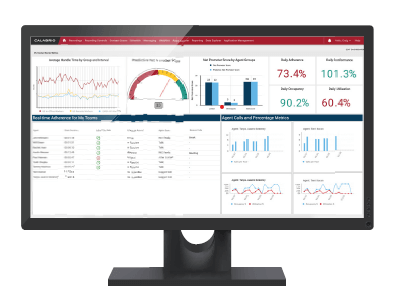
GENERAL BEST PRACTISES, TIPS AND TRICKS
Below are some best practises, tips and tricks for enabling remote workers. We’d love your feedback and ideas.
STAYING COMPLIANT
For your industry or location, are there specific requirements for remote workers? These resources show how Calabrio can help with HIPAA, GDPR, PCI or CCPA.
KEEPING YOUR AGENTS ENGAGED
- Foster a community and collabouration—out of sight can mean out of mind. Think about how you can convert the typical office environment into a virtual space that still provides what employees need. Use technologies such as WebEx, Lync or FaceTime for “face-to-face” meetings to provide coaching and feedback. This is a great way to establish rapport and trust with employees.
- Monthly 1-on-1 with agents: This is a good practise regardless where the agent sits, but it’s even more important when agents are remote. Use video conferencing as mentioned above whenever possible.
- Weekly meeting and updates:
— Provide a weekly corporate update where all employees log-in
— Meet weekly with peer/veteran coaches - Team building events: When appropriate, consider monthly or quarterly on-site team building events where all agents and supervisors in the region communicate together.

Additional Resources

Webinar: Managing Change in the New Reality
Change management has suddenly become a major priority. Is it baked into your contact centre strategy? Watch the webinar to learn more.

Webinar: Resources to Help Make Remote Work Actually Work
Learn more about companies are managing fully remote workforces for the first time.

Webinar: How to Use Analytics to Manage and Respond to Crisis
Many of our customers are experiencing a significant increase in customer interactions, as well as new challenges associated with agents working remotely.

Webinar: Best Practises for Keeping Remote Employees Engaged
As your brand’s voice on the front line, it’s imperative to find new and unique ways to keep your remote agents motivated to maintain performance and deliver quality customer care.

Ebook: Best Practises for Enabling Agents to Work from Home
Download our new Ebook to learn Calabrio application-specific checklists and best practises to ensure your agents have a successful work from home experience and continue to provide exceptional customer service.

Webinar: Delivering Great Customer Experience in a Work-From-Home Environment
In this period of disruption and uncertainty, it’s never been more important to be focused on your customers and employees.

Webinar: Rapidly Moving to a Work-from-Home Model in Your Contact Centre
In this webinar on demand, Calabrio experts answer your most pressing questions, from dealing with bandwith issues to ensuring agents are still working while at home.

Calabrio Success Centre Resources: COVID-19
In response to current events, we’ve created dedicated forums for you to share experiences, and have launched a COVID-19 Resource Centre on the Calabrio Success Centre for you to easily access these evolving resources.

Datasheet: Q&A on Using Analytics to Manage and Respond to Crisis
Calabrio hosted a webinar on how to use analytics to manage and respond to crisis. We hope this collection of common questions will help develop your analytics strategy in this challenging time.

Webinar: Navigating Data Security and Compliance in a Remote Workplace
To learn more about identifying and mitigating security risks in a remote workforce setting and best practises in unconventional times, we hosted a webinar and open Q&A session.

Datasheet: Q&A on the Rapid Shift to Work-from-Home Model for Contact Centres
We fielded dozens of questions from attendees of a webinar on work-from-home model (WFH) strategies for contact centres and have created this resource to address many of your concerns.
BLOG POSTS

Flexible Working:
A 3 Point Plan
Flexibility in contact centres means many things to many people. It usually means making life easier for agents, enabling them to strike the all-important work/life balance.

How to keep your remote agents connected and engaged
If you are looking for ways to engage your remote employees (or brick and mortar) here are a few tips to get you on your way

If You Love Your Agents Set Them Free
The morning grind. The daily commute. Rush hour. These days, the colloquialisms we use to refer to our workday travels don’t need to hold true.
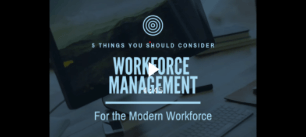
5 Important WFM Software Considerations
What should you consider when evaluating new workforce management (WFM) software? Watch this video to learn five things in WFM that you may not realise make a big difference in managing your contact centre.

Rethinking Workforce Management
As contact centre professionals, we all understand the importance of workforce management tools and processes in ensuring that we have enough agents to work each shift.

4 Ways to keep your contact centre agents engaged
Those who work in the contact centre understand a very different truth: engaged, experienced contact centre agents are more important than ever

How to keep your remote agents engaged
Today, people want to work their own hours, choose where they work and do so without the restrictions of formal direct supervision in a traditional office setting.

Anytime Anywhere Visibility
CentraCare uses Calabrio ONE to permit visibility into forecasts and schedules, use different scheduling types for different needs, and ensure consistent customer/patient service.
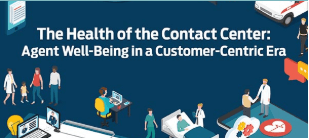
The Health of the Contact Centre
In today’s competitive landscape, brands are recognising that creating a first-rate customer experience is a significant differentiator and the key to establishing customer loyalty.

Flexibility is key
With customer expectations at an all-time high, brands have never been under more pressure to deliver a great customer experience

The Definitive Primer on Employee Engagement
There’s a massive shift underway in today’s contact centre: yesterday’s focus on workforce optimization (WFO) is morphing into a new focus on employee engagement.
VIDEOS
Tips for QM with Remote Workers
Quality Management is an important tool to not only help you monitor agent and call performance regardless of where the agents sit
Empower Remote Agents with Workforce Management
COVID-19 has highlighted the need for workplace flexibility as more employees work from home and are faced with other constraints such as school closures and childcare.
Technical Tips for Enabling Remote Agents
As you’re preparing for some or all your workforce to work from home, there are some best practises we encourage you to follow
Quality Management – Last Date Time of a contact by a person
This video covers how Quality Management users can build a quick and easy report to ensure their agents are being recorded properly.
Using Desktop Analytics to Spot Slow Downs with Remote Agents
Desktop Analytics offers insights into agent activity and allows managers to discover and help fill educational gaps when needed.
How to use WFM to Empower a Remote Workforce
Has your team transitioned to a remote / work from home model? Learn how to creatively use Calabrio WFM and Calabrio Teleopti WFM features.

A Guide to Workforce Engagement Management
As a contact centre leader, you’re familiar with the term “workforce optimization” (WFO). After all, it’s an established product category, a topic often discussed and disseminated by industry analysts and other customer experience influencers.
But what you may not know is that WFO is giving way to a new, up-and-coming application, one widely touted as “the next generation of WFO”: workforce engagement management (WEM).
Workforce engagement management augments WFO features with additional, agent-centered offerings—such as Voice-of-the-Employee (VoE) and agent assistance tools—that help organisations elevate and sustain the customer experience. The additional offerings are designed specifically to:
1
Decrease Agent Attrition
2
Arm agents with the tools they need to best serve customers
3
Align customers with the specific agents—based upon the agents’ subject matter expertise, personality profile, etc.
4
Add soft benefits, such as agent value, agent flexibility, etc.
These advancements help companies more easily, efficiently overcome rising competitive threats, talent shortages and shrinking agent tenures. With the enhanced customer and employee experiences, increased productivity and improved efficiencies WEM delivers to the contact centre, it’s clear WEM is here to stay. In fact, Gartner warns those companies that don’t focus on WEM “will struggle to meet customer experience objectives due to the reduced caliber and engagement level of employees prepared to work in their operationally focused environment.
Shifting from WFO to WEM: What Changes?
Here are a few key ways companies can build upon existing WFO strategies to realise the benefits of WEM:

Leverage analytics to shorten employee feedback loop
Traditionally, only flagged contact centre interactions and a handful of at-random interactions were reviewed as part of agent evaluations. But evaluating an agent based solely on their worst calls paints an incomplete picture. It also leads to a heavy focus on the weakest agents, leaving stronger agents—those most valuable to the contact centre—with little to no feedback on their own opportunities for improvement.
Modern analytics tools support employee engagement by digesting data from all of an agent’s interactions, revealing comprehensive trends that provide more accurate insights into the agent’s strengths and weaknesses. Managers can provide ongoing feedback to every agent—including top performers—to help ensure all contact centre agents move forward in their skill development and performance.
In addition, WEM makes timely feedback a reality. Agents crave feedback, and research shows consistent performance reviews increase agent engagement. With WEM, agents see evaluations soon after managers complete them— much sooner than with legacy WFO offerings. By receiving timely feedback, agents feel a greater sense of pride over their daily performance; they also can assume more ownership for their ongoing improvement by proactively reviewing daily performance reports and using this information for effective self-coaching. At the same time, the short, continuous feedback loop enabled by WEM lets managers quickly address concerns before they blossom into customer issues, and drives an ongoing cycle of agent engagement and improvement.
Additionally, WEM analytics can instil a greater sense of purpose in agents. By connecting contact centre performance data with other business metrics, agents can instantaneously receive feedback on how their performance directly impacts business outcomes.
Evolve scheduling and at-home agent philosophies
Companies embracing WEM balance employee input against business needs when setting schedules and reviewing paid time off (PTO) requests. Interactive, technology-based scheduling allows agents to view and select their shifts, giving them more control over their work-life balance. Workforce engagement management also leverages company policy to let agents select their PTO and automatically offers alternatives—such as trading shifts or working an alternate schedule—if the request can’t be approved.
A move to WEM also helps companies re-think their at-home agent policies. Until recently, most companies didn’t trust agents to work full shifts when working from home, so many businesses instituted policies banning any kind of at-home agent flexibility. These same companies now find that, deployed against the right strategy, some at-home agent scenarios actually are more productive for both the agent and the business—and the flexibility it allows strengthens the engagement between them.


Involve agents in more business decisions
In addition to allowing agents to have a voice when it comes to shifts they work, companies shifting to WEM solicit feedback from agents on other important topics, to help them feel a greater sense of ownership and pride in their company. For instance, they might allow agents to help determine by which performance metrics they’re measured or request agent input on new business policies under consideration.
Increase operational improvements
Similar to WFO, contact centres focused on WEM rely on analytics to help improve operations. This initiative requires elimination of data silos and an integrated view of every location, channel, agent and interaction. Since WEM can apply advanced analytics to all of an agent’s interactions and vital statistics—from call volume to performance—it reveals efficiencies and operational improvements that enable contact centres to deliver more enhanced customer experiences.


Your contact centre agents have never been more important to your business’s success. It’s time to embrace workforce engagement management—Calabrio can help.
![]() Gamification
Gamification
Agents can earn badges based on quality scores and schedule adherence. This gamification engages and motivates agents by inspiring competition and reinforcing positive behaviours.
![]() Coaching and mentoring
Coaching and mentoring
Agents can track their performance through widget-based dashboards and adjust their performance as needed. Agents can also request mentoring from their peers— boosting both low performers and providing developmental opportunities to high performers.
![]() Evaluation and improvement
Evaluation and improvement
Sophisticated, advanced analytics tools—such as multi-channel interaction evaluations, self-evaluations and predictive evaluations—support the evaluation and scoring of agents.
![]()
Time management
Dynamic Scheduling—Calabrio’s modern approach to shift-bidding—empowers agents with even greater visibility, flexibility and control of their work schedules and work-life balance.
![]() Intraday Management
Intraday Management
Agents have the flexibility to take on overtime or take voluntary time off for unforeseen changes in staffing requirements, all while keeping the needs of the business in mind.
![]() Performance management/metrics and recognition
Performance management/metrics and recognition
Enhanced agent scorecard functionality enables managers to customise evaluations to specific agent goals; managers also can connect evaluation scores with agent benchmarking technology.
![]() Voice of the Employee (VoE)
Voice of the Employee (VoE)
Calabrio reveals VoE insights to enable coaching and training, and allow managers to identify and address issues before they impact engagement or lead to turnover.
![]() Interaction analytics
Interaction analytics
Calabrio’s comprehensive analytics platform allows you to mine customer interaction data to deliver predictive benchmarking and behavioural insights that can be used to improve employee engagement and retention.
ENGAGE, RETAIN AND EMPOWER YOUR BEST EMPLOYEES
Workforce engagement management is emerging as a powerful new way to elevate and sustain the customer experience. The adoption of WEM benefits the agents in your contact centre, the customers interacting with your brand and your bottom line. Calabrio ONE offers entirely unique features that extract the best possible performance from your contact centre employees. No matter how complex your offerings or your customer base may be, Calabrio ONE provides your team with access to intelligent tools that enable them to deliver measurably better performance at a lower cost.
Contact Centre Reporting
From the latest KPIs to the best practises in contact centre reporting, these are resources to help you evaluate and improve performance in your contact centre.
Workforce Management
Having the right people in place, focused on key business goals and working productively is the key to successful workforce management. Check out the resources below to learn more about how to schedule and forecast for your call centre and improve agent retention and training.
Customer Experience
Today 9 in 10 companies today compete primarily on the basis of customer experience. This age of customer-centricity gives the contact centre a tremendous opportunity to elevate its influence—the modern, multi-channel contact centre is the often a customers’ main touch point with your business and your brand. Read on to learn how you can improve customer experience in your contact centre.



